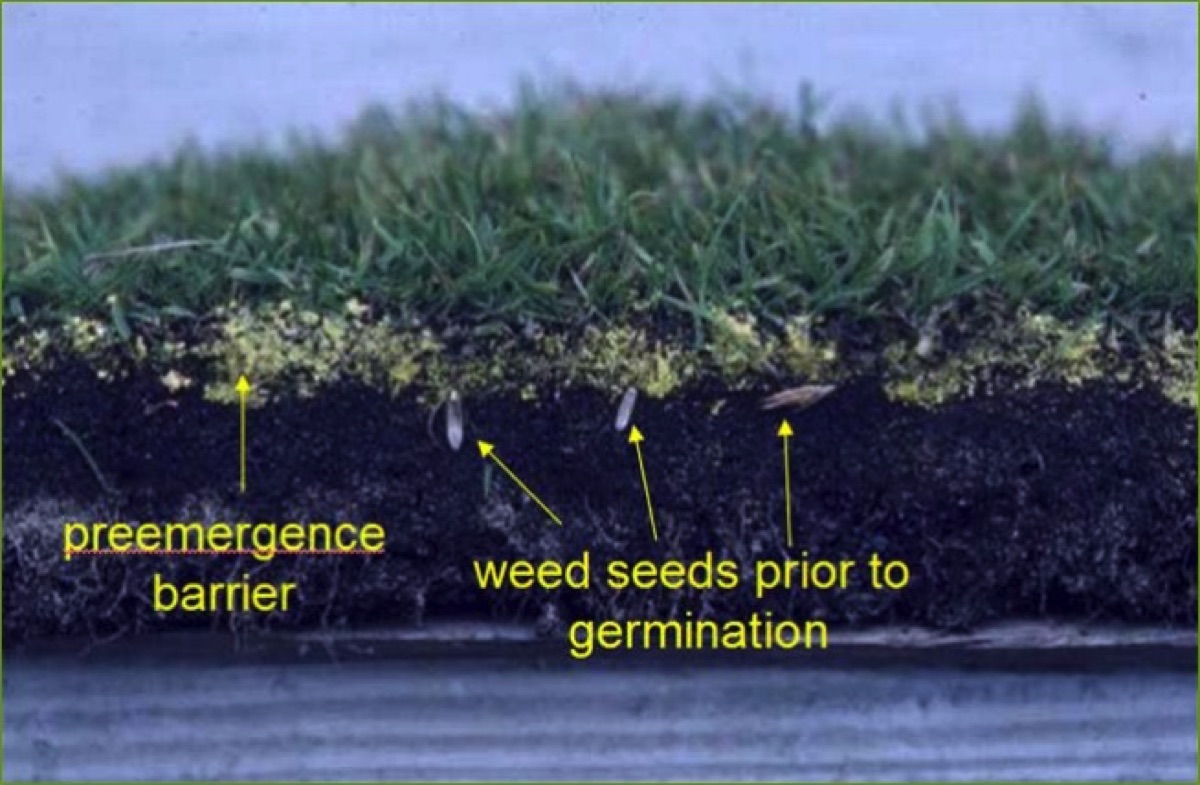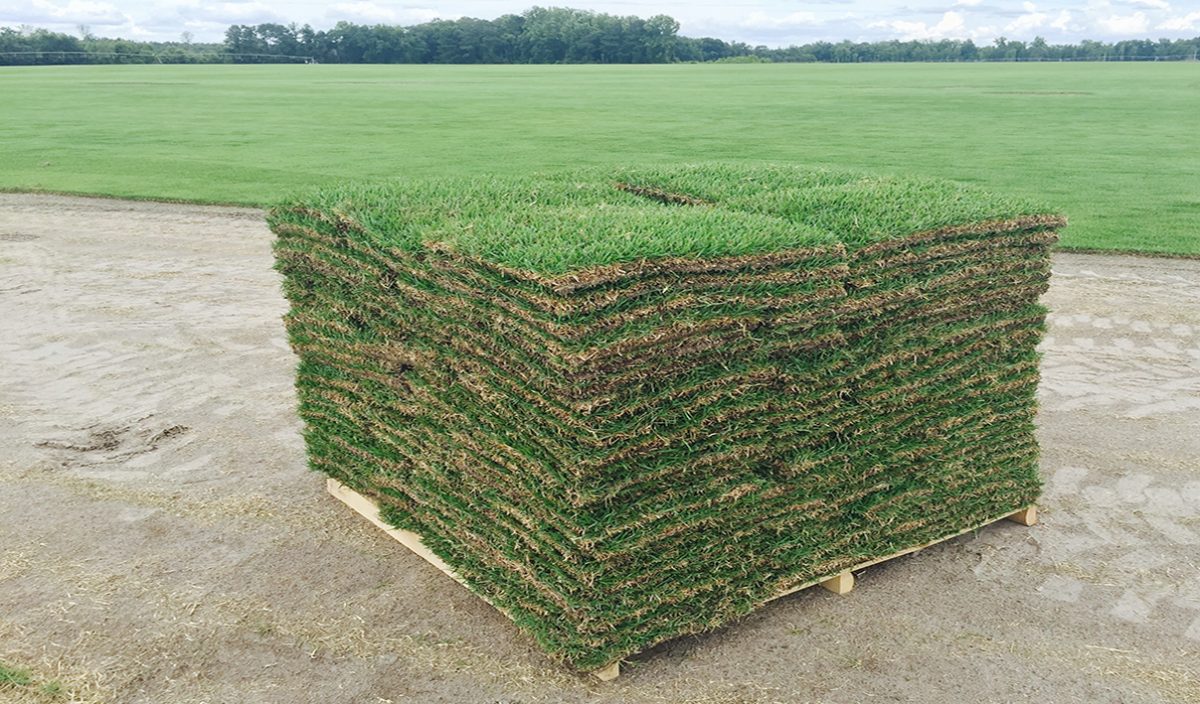Thanks for this from our friends at Sod Solutions.
The heat of summer is slowly coming to an end and the cool temperatures of fall are finally among us. When it comes to the beginning of fall, a lot of people may think that this signifies the end of lawn care. Although time spent outside on your lawn may be greatly reduced, the time that takes place between summer and fall is still important for preparing your lawn for winter and next spring. Applying a pre-emergent herbicide to prevent winter weeds is one of the best things you can do for your lawn during this time.
Certain annual weeds can continue to grow during the winter. These include poa annua, common chickweed, purple deadnettle, and henbit. Certain annual weeds typically emerge in the fall and winter and continue to grow actively in spring. After they flower in spring and disappear during the summer, they often return again in the fall or winter when seeds germinate.
What is a Pre-Emergent Herbicide?
Pre-emergent herbicides, as the name suggests, are a category of herbicides that prevents weeds from appearing in the first place. The difference between a pre-emergent and post-emergent herbicide is a pre-emergent herbicide should be applied before a weed grows while a post-emergent herbicide should be applied if you already have weeds in your lawn. Pre-emergent herbicides form a barrier in the soil that prevents weeds from sprouting or germinating as illustrated in the image below. It can be hard to get rid of weeds once they are already growing in the spring, so get ahead of the game by applying a pre-emergent herbicide in the fall and save yourself time and money—especially if you already know which weeds tend to come around in the spring every year.

Apply a Pre-Emergent in the Fall
The best time to apply a pre-emergent herbicide to your lawn is between the months of August and November for both warm and cool season grasses. Your soil temperature should be below 70 degrees and dropping. Be sure to follow up with a second application of a pre-emergent herbicide in the spring before temperatures start to warm up as well.
Selecting a Pre-Emergent Herbicide
When it comes to selecting a pre-emergent herbicide, choices can be daunting. Narrow down the selection process by looking for an herbicide that works on the type of weed you are seeing and for your type of grass. Most herbicides will say on the back of the product which grasses they can and shouldn’t be used on as well as which weeds they will kill. It is important that you choose a selective herbicide. A non-selective herbicide will kill all plants it comes in contact with—including your grass. A selective herbicide will kill only the weeds you want to rid your lawn of. Once you have simplified your choices of herbicides, the last thing to choose between may be a granule vs. a liquid herbicide. Liquid herbicides are usually mixed with water and then sprayed. Granular, or dry herbicides, are small pellets coated with herbicides that can be applied with a push spreader or a hand-held spreader. Either choice of granular or liquid herbicides will perform well on your lawn. The most important thing to look for is that it kills the weeds you have and works with your type of grass.

Thank you so much for helping me learn about “pre-emergent” weed control and what it can do for you. Protecting our lawn as much as possible before the winter season starts could really make a huge difference in how hard it is to handle the spring season next year. I’ll do this for sure as soon as I find a weed control expert in the area that can lend me a hand.